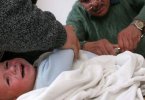What's in this article?
Spermatocele Overview
A spermatocele (epididymal cyst) is a painless, fluid-filled cyst in the long, tightly coiled tube that lies above and behind each testicle (epididymis camera.gif). The fluid in the cyst may contain sperm that are no longer alive. It feels like a smooth, firm lump in the scrotum on top of the testicle.
Having a spermatocele doesn’t affect a man’s fertility.
Symptoms of Spermatocele
A spermatocele usually causes no signs or symptoms and might remain stable in size. If it becomes large enough, however, you might feel:
- Pain or discomfort in the affected testicle
- A feeling of heaviness in the testicle with the spermatocele
- A mass, or fullness, behind and above the testicle
What causes spermatocele?
Although the cause of a spermatocele is often unknown, it may be caused by obstruction of the tubes that carry sperm from the testicles (epididymal ducts).
Risk factors of spermatocele
There aren’t many known risk factors for developing a spermatocele, except for increasing age. Spermatoceles are most often found in men between the ages of 20 and 50.
How is a spermatocele diagnosed?
A spermatocele is usually diagnosed by examining the scrotum. As part of the exam, your doctor will shine a light behind each testicle (transillumination) to check for solid masses that may be caused by other problems, such as cancer of the testicle. Spermatoceles are filled with fluid, so light will shine through them (transillumination). Light will not pass through solid masses that may be caused by other problems, such as cancer of the testicle. An ultrasound may be used to confirm the diagnosis of a spermatocele.
How is spermatocele treated?
Spermatoceles are not usually dangerous and are treated only when they cause pain or embarrassment or when they decrease the blood supply to the penis (rare). Treatment is not usually needed if a spermatocele does not change in size or gets smaller as the body reabsorbs the fluid.
If the spermatocele gets larger or causes discomfort, a procedure to remove the spermatocele (spermatocelectomy) may be needed.





